Steel pipe manufacturing history and process research
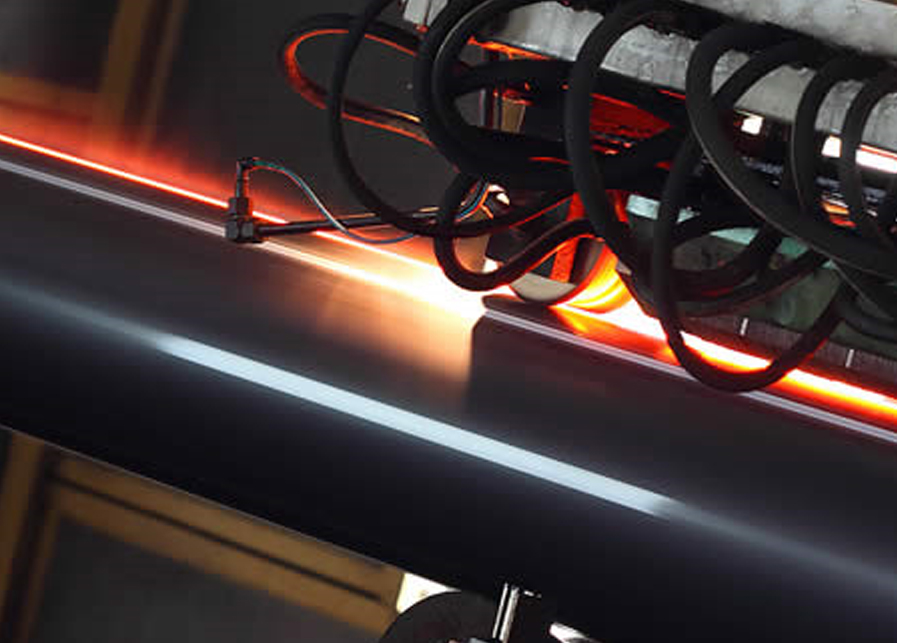
Carbon Steel Pipe
Carbon steel pipe starts out by arriving at the pipe mill in the form of either a billet (basically a large solid steel bar) or a coil (imagine a roll of toilet paper made out of steel). Depending on the manufacturing method used by the mill, these billets or coils will be processed to yield the finished end product. We will examine the various manufacturing methods used to make carbon steel pipe, but first let’s look at how the carbon steel got here in the first place.
RAW STEEL MANUFACTURING PROCESS
Humans have been melting iron ore through a process called smelting for thousands of years. Molten or semi-molten iron would be hammered (forged) or poured into their desired shapes and allowed to cool. People quickly discovered that the properties of the finished product (strength, ductility, longevity) could be controlled in many ways; manipulating cooling time and conditions or adding/removing certain media for example. Carbon steel was one such popular derivative of raw iron made by introducing elemental carbon into the smelting process in the form of charcoal. As useful as steel was, it was time and labor intensive to produce, thus making it generally a poor material for mass consumption. In the mid 19th century, the Bessemer process was patented where by molten pig iron (cheaply made and full of high carbon, silicon, and manganese impurities) is subject to blasts of oxygen which oxidize the impurities thus making them simple to remove from the molten steel. This method of removing excess elements was much easier and cheaper than adding alloying elements to iron, and is directly responsible for the industrial revolution and the beginning of the mass production of carbon steel. Today the technology has changed, but the same basic principles of the Bessemer Process are still the backbone for modern raw steel production.
Modern steel mills produce steel by either melting scrap metal or adding coke (pulverized coal with the hydrocarbons removed) to smelted iron ore. The molten metal is subject to a modern derivative of the Bessemer Process to remove undesirable elements, other desirable elements are then added (depending on the final desired properties of the steel), and then the steel is cast and cooled into which ever shape the customers desire. As mentioned prior, in the case of carbon steel pipe these casts are typically in the form of coils or billets.
TIME TO MAKE THE PIPE
Billets and coils are delivered to the pipe mill ready to be made into carbon steel pipe. Depending on the capabilities of the pipe mill and the end use of the final product, the casts will be formed into pipe by means of four distinct different manufacturing methods; seamless, electric resistance weld (ERW), double submerged arc weld (DSAW), or spiral weld.
SEAMLESS CARBON STEEL PIPE
Seamless carbon steel pipe has, as its name implies, no longitudinal weld seam. It is, in essence, one solid homogeneous piece of steel. A solid billet is simply heated and then stretched over a series of mandrels until the pipe has achieved its desired diameter and wall thickness. Typically seamless carbon steel pipe fourteen inches and greater in diameter are rolled from shells which expand the diameter and reduce the wall until the desired dimensions are achieved. Sizes smaller than fourteen inches in diameter are typically stretch reduced whereby the diameter is gradually reduced and the wall relatively increased via a series of rolls. There is also a cold forming process for seamless pipe production, but such manufacturing processes are typically reserved for different alloys. Being that there is no seam, seamless carbon steel pipe is typically used in high pressure applications. Common seamless specs include; API5LB, A106, A333
ELECTRIC RESISTANCE WELD (ERW)
Early carbon steel pipe producers employed a manufacturing method called butt-welding. The butt-welding process was quite elementary in that it merely rolled a piece of heated steel plate into tubular form and created a longitudinal weld through compression and direct heat. In 1922 the Fetz Moon Tube Company instituted the first continuous weld line where by rolled up coils of steel (again, imagine a toilet paper roll made of steel) could be unrolled, leveled, and continuously fed down a line of rolls which would slowly bend the steel into shape eventually to a point where the ends could be butt-welded. When the mill came to the end of a coil, they could simply weld it to the beginning of the next coil with little interruption to production. As industry called for tighter tolerances and better welds, the continuous butt-weld process gave way to electric resistance welding (ERW). ERW is quite similar to the continuous weld process in that coils of steel are leveled and fed down a line of forming rolls, but that is where the similarities end. During the ERW process the unrolled coils (skelp) are not heated and the longitudinal weld is created by way of an electric current. The weld is then electronically inspected for defects, normalized so as to maintain consistency with the rest of the steel, and cooled. At this point the pipe is sometimes resized and then cut, coated, and or tested to meet the desired specifications. ERW pipe typically holds much tighter tolerances and maintains surface and wall consistency much more than seamless carbon steel pipe. Common ERW specs include; API5LB, A53, and A500
DOUBLE SUBMERGED ARC WELD (DSAW)
The double submerged arc weld (DSAW) process is similar to that of the ERW process in that coils of carbon steel are unrolled in a continuous ribbon. As the DSAW method of manufacturing is typically used for larger diameter pipe, the method of roll forming the skelp is similar to but not exactly like that of ERW. DSAW pipe is typically either pyramid rolled (three angled OD rolls in the shape of a pyramid form the pipe) or rolled using the U-O-E process (skelp is first subject to a “U” shaped press, followed by a “O” shaped press). The most prominent difference between ERW and DSAW carbon steel pipe is the longitudinal weld. The DSAW arc weld is submerged in a flux media to keep the weld from being exposed to ambient contaminants. Also, both the OD and the ID of the pipe is welded, typically at separate times creating a situation where one weld consumes the other creating a higher quality weld. DSAW carbon steel pipe is easily distinguishable due to its prominent and consistent ID and OD weld seam. Common DSAW specs include; API5l, A252, and A139.
SPIRAL WELD
The most easily distinguishable manufacturing method for carbon steel pipe is spiral weld. In this process the weld is created in the exact same manner as that of DSAW, only the weld seam takes on a helical or spiral appearance due to the way the skelp is rolled to form. Just as in the case with the ERW and DSAW process, a continuous ribbon of skelp is leveled and sent through a series of rolls to form. In the case of the spiral weld process a simple three roll bend is typical and thus makes for faster, more efficient, and less costly manufacturing process. The spiral weld process also allows the mill to roll a much wider range of sizes than DSAW or ERW mills. Also, due to its axial symmetry, spiral weld carbon steel pipe has an inherent ability to maintain straightness. Common spiral weld specs include; API5LB and A252. Contact us for your next carbon steel pipe project.
Manning, C.P. and Fruehan, R.J. Emerging Technologies For Steel Making. JOM (53) 10. 2001
Ashton, T.S. Iron and Steel In the Industrial Revolution. New York: Augustus M. Kelley, 1968.
Stubbles, John. “The Basic Oxygen Steelmaking Process.” American Iron and Steel Institute Steelworks Learning Center.
Sporel, Joseph. A Brief History Of Iron and Steel Production.
National Association of Steel Pipe Distributors. Tubular Products Manual A Steel Pipe And Tubing Textbook. Third Edition 1996
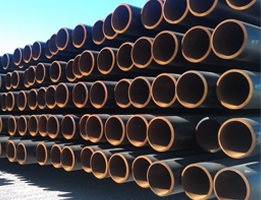
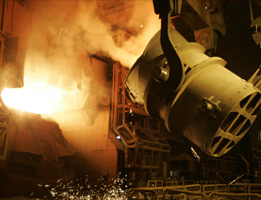
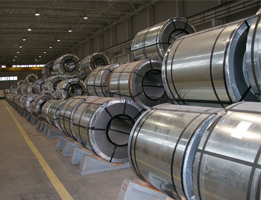
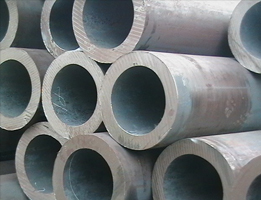
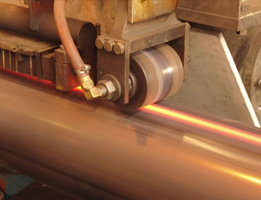
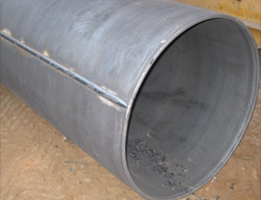
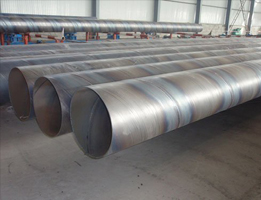


2 comments
Shanteta
October 6, 2022 at 7:30 am
What are the three major methods of steel pipe manufacturing?
admin
March 28, 2025 at 1:58 pm
There are three main processes used in the manufacturing of metal tubing and pipe.
Electric Welded Tubing. Also referred to as Electric Resistance Welded or ERW tubing, is produced when a strip of steel is passed through rollers to form the desired shape. …
D.O.M. or Drawn over Mandrel tubing. …
Seamless Tubing Process.